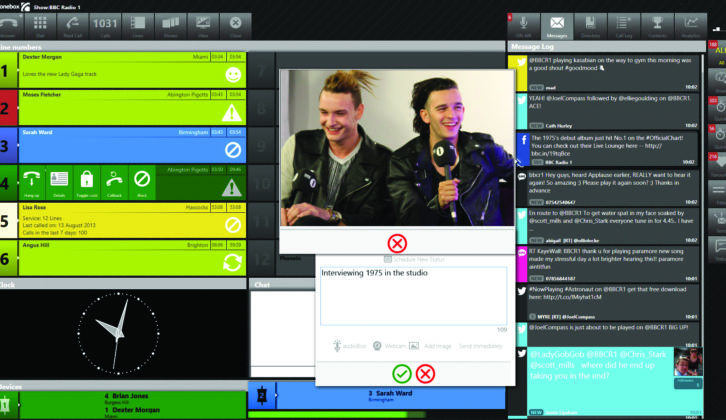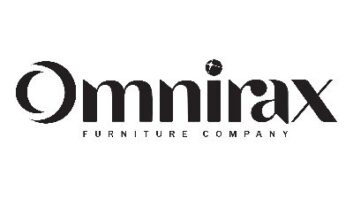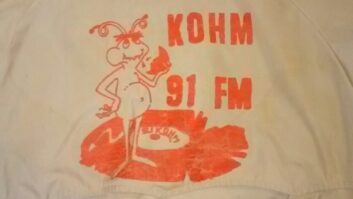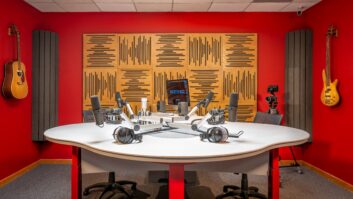SAUSALITO, Calif. — These five images from two iconic addresses in San Francisco radio history offer a revealing window into the changing shape of radio broadcasting furniture design. Studios at 201 3rd Street and 865 Battery Street have seen a series of ownership swaps and shuffles with Entercom and Bonneville being the current stewards.
The shot of KFRC from 2004, Fig. 1, illustrates the end of one era colliding with the dawn of the next. CDs were the dominant format, but cart machines and even tape players were lurking in the background. Monitors were CRT and stacked wherever space permitted. The furniture is the familiar oak and blue of so many PR&E studios from that era.
Omnirax Furniture Co.’s first build in San Francisco in 2005, Fig. 2, ushered this studio into the computer age. Under the guidance of legendary chief engineer Phil Lerza, the studio layout was reconfigured around monitors and keyboards, but paper still had a prominent position in front of the board op. There was still an abundance of rack space — some designated for a future use that never materialized.
Across town on 3rd street a similar shift occurred as Shingo Kamada oversaw a complete overhaul of 10 studios with familiar call letters including KOIT, KDFC and KZBR. Fig. 3 shows how KDFC’s extensive CD library dominated the background of this classical station’s air studio yet the facility’s design fully embraced computer’s infiltration into the airwaves.
Fast forward a decade. In 2016, Shingo brought Omnirax back into his facility to build furniture for a new feel, new format, fresh take, now called KGMZ(FM)/95.7 “The Game” (Fig. 4). From a design standpoint, we wanted to build furniture that reflected these changes: gone are the CDs, gone is most of the paper, as well as most of the rack gear. In its place, five pods with monitors front and center at each position. This stand-up studio supported a revolving cast of up to five people in a free-wheeling lively format. It certainly did not hurt, when in 2016 KGMZ became the flagship station for the Golden State Warriors.
KGMZ’s tenure on 3rd Street proved to be short lived as the station’s ownership and location was swept up in the swaps resulting from Entercom’s merger with CBS Radio. And where was it moving — cross town to Battery Street, replacing the KFRC Studio A from 2005. KGMZ’s cross-town move afforded a second chance to do a good thing better. Since it’s rare that we rebuild the same studio for the same station is such a short time frame, we asked Michael Smith, the longstanding chief engineer at Battery Street to check whether the talent moving into his plant approved of their set-up. Getting their approbation gave us license to create this latest iteration of monitor-centric talk furniture with sound and sight lines now optimized for cameras and web streaming (Fig. 5).
This visual time capsule shows a flip frame view of trends in studio design. Less wire, less rack gear, less paper. More monitors, more cameras and more modes of delivering the content that only radio can provide.
For information, contact David Holland at Omnirax in California at 1-415-332-3392 or visit www.omnirax.com.














